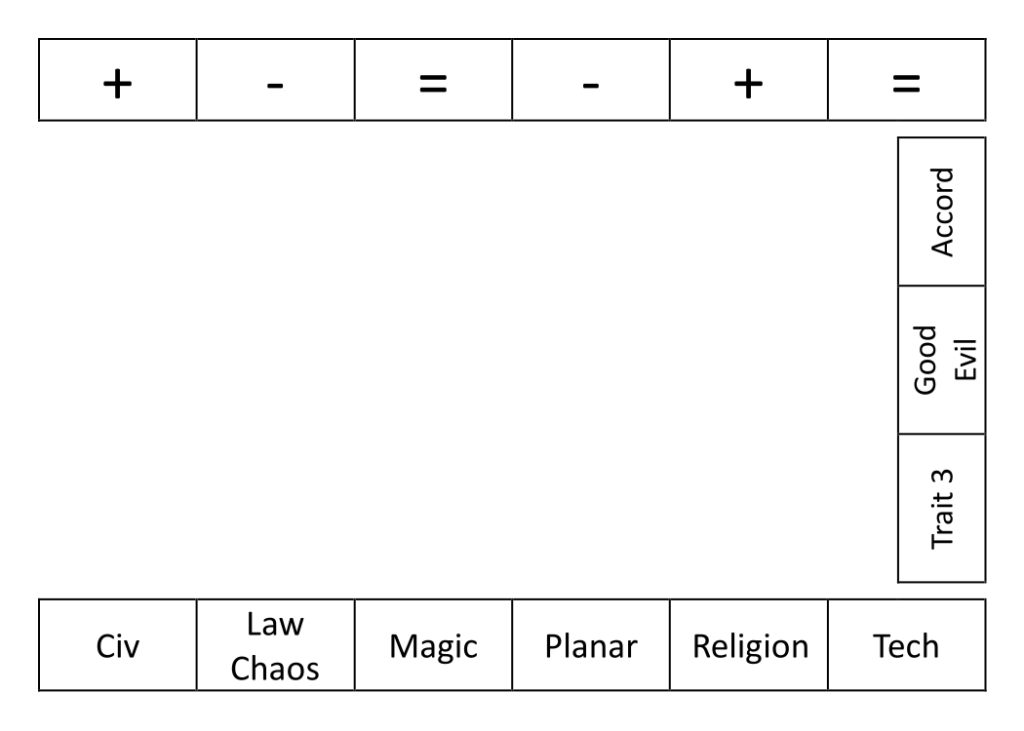Ben Robbins’s Microscope is one of the major inspirations for Making History. I really like the structure and process, and I’ve added another element: ages. Between ages, the world changes.
In Microscope terms, each age has a different palette. That is, different things are excluded and different things cannot be denied in different ages.
How to define ages, though?
My answer starts with the Deck of Many Worlds, part of the Starfinder roleplaying game. Each card has many elements, but there are two of greatest interest to me.
- Each card has six boxes with different world traits.
- Accord (peace vs war)
- Good/Evil
- Law/Chaos
- Magic
- Religion
- Tech
- Each card also has six boxes that will line up with the other boxes. Each box marks the connected trait ‘up’, ‘down’, or ‘neutral’.
The Deck of Many Worlds has 110 cards. The six traits can be arranged in 120 distinct ways, which means not all will be represented here… but it’s not that important. Assuming two markers of each value, there are 90 distinct ways to arrange them. This renders the trait orders irrelevant.
For my purpose, I propose to have nine traits, six of which are included on each card. This gives me 84 unique sets of traits. The six chosen traits are significant in the age, even if neutral. The three traits not chosen are not significant in the age.
I’m starting with the same six traits as Deck of Many Worlds, and looking at three more.
- Accord (as above)
- Good/Evil
- Law/Chaos
- Magic
- Religion
- Tech
- Civilization (population? How settled the age is)
- Planar (how much interaction there is with other planes)
- Climate (how generally hospitable things are)
Still pondering exactly what would be the right fit for the new traits, they are subject to change.
Here’s a quick mock up of a card. I’ve got the traits along the bottom and the markers along the top (for reasons I’ll describe in another post). This ties up two edges. I put the ‘unselected’ traits along the right side so they’re all accounted for… I could leave them out, but the boxes I’ve got them in are the same as the other trait boxes. This leaves the option of turning another card sideways and assigning markers to those traits as well. The center section is distressingly empty right now, I haven’t decided what to do there.

(Incidentally, I hate doing mock ups in Word… but I don’t feel like breaking out the ‘real card-making tools’ for something this simple.)
Selecting six of nine options gives 84 distinct combinations. That’s comfortably close to 90. Once I connect the markers with the traits, I can see two increased, two decreased, two neutral, and three not-so-relevant. I think if I add six more special cards I can fit things pretty well.
Or seven special cards. I need a card that says “use the markers on the trait card” so I can see all marker possibilities. This would give me a total of 91 cards, which is a pretty decent number.
If I add marker cards with three increase and three decrease cards, there are 110 cards in total. That is a very happy number for card decks.
What to do with the other 26 cards?
